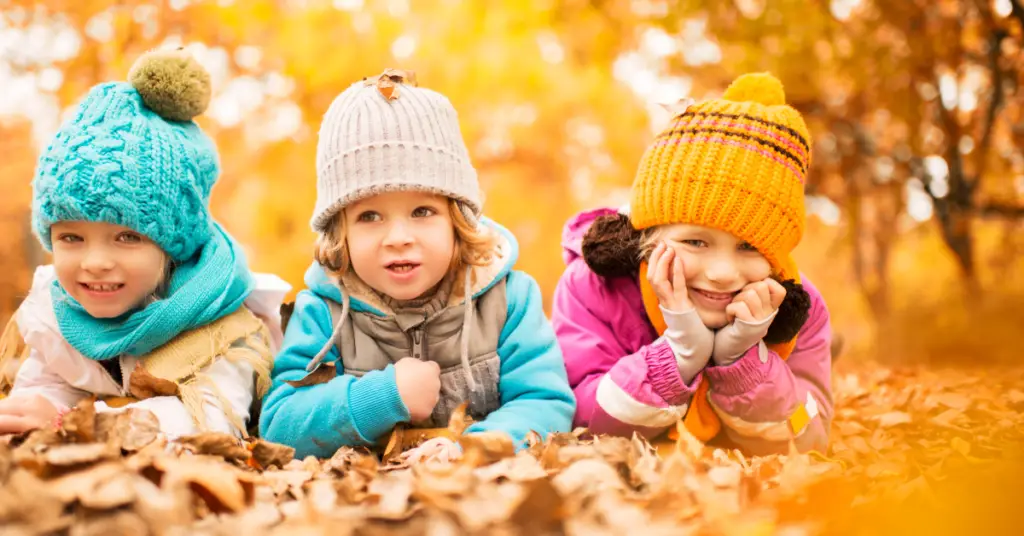Our children, many of whom have a great opportunity to live to the end of this century, will inherit our warming world. The best way to start, before trying to explain greenhouse gases as well carbon footprint: is to ensure that your children have many opportunities to understand and appreciate nature.
This isn’t best done through a computer monitor or TV screen, but giving your children the opportunity to see salmon you push relentlessly upstream against a strong current, where a sparrow nests on the ledge in front of the bedroom window.
It has been said that we can’t save what we don’t understand, and helping your kids connect with nature is the best way to get them thinking about and taking action on global warming.
How do you teach children environmental issues?
Consider planting a vegetable patch, flower garden, or even seeds in planters with your kids. The whole concept of life and growth becomes real when children see it happening in front of their eyes. Make it an event to go to the store and let them choose their seeds.
While you plant together, talk to them about the role of plants and trees in nature, including how they reduce CO2 through photosynthesis. Fast-growing crops such as radishes, which are ready to eat in about 3 weeks, are ideal for beginners.
Kids also always love flowers, so be sure to plant pretty ones. Visit community gardens and farms, like the Halloween Pumpkin patches or fields of strawberries, they will open their eyes to the world’s opportunity to plant seeds offers.
Playing in natural environments will also increase children’s appreciation for the outdoors. How about playing hide and seek in a natural (safe) environment? The wonder felt, for example, in a redwood forest is a source of inspiration, especially for children.
Camping next to lakes, picnicking in a meadow, swimming, and rafting are all healthy ways for the whole family to enjoy the great outdoors together. These fun experiences can make children even more aware of the value nature has in our lives, inspiring them to overcome the challenges of keeping our earth healthy.
And because fighting climate change means saving ourselves and the planet, all the experiences parents can help create, and build their child’s self-esteem and compassion for other living things will give to children the foundation for a happy and healthy life.
Despite our youth’s growing concern about the environment, most don’t understand how natural systems work or what human actions and decisions look like related to pollution, global warming, and other environmental impacts. The good news is that any daily activity can be a teachable moment to learn dynamics and relationships: driving to school, eating a burger, throwing away a package, watching a plane leave a trail above your head, turning on a light switch or a computer.
Of course, make sure that you are knowledgeable about these concepts so that you can explain them well. Setting a positive example through your decisions and actions as a parent is also very helpful.
Richard Louv in his book points out that modern media and even environmental groups might be doing more to discourage rather than empower children on global warming and other significant environmental issues.
He posits that the messages children receive often have undertones of “it’s too late” or”it’s too big to solve” and that this generates despair, indifference, and inaction among our young people.
While it’s true that global warming is cause for alarm, we have to find ways to insert hope without candy-coating a real problem. A parent or the teacher might point to the great things that small changes can make.
These examples can show children that it is possible to solve enormous problems, through policy as well as personal action. Even though this is a “grown-up” subject, if explained well, even kindergarten children can understand it.
Since today’s youth will be on computers, watching movies and TV, and hopefully reading a lot of books as well, we can be sure that their consumption of the media helps to develop their knowledge and interest in the natural world and the light of the human community.
Widely accessible media allows children to learn to love and understand places and creatures they may never see in person. Thankfully, there is no shortage of resources for us and our children to learn
about ecology, interaction with human nature, and environmental issues.
A solid interactive Internet resource is the EPA’s Climate Change Children’s Site: www.epa.gov/climatechange/kids. Check out the site, but don’t forget to go to the woods with your child after you log off!

Erzsebet Frey (Eli Frey) is an ecologist and online entrepreneur with a Master of Science in Ecology from the University of Belgrade. Originally from Serbia, she has lived in Sri Lanka since 2017. Eli has worked internationally in countries like Oman, Brazil, Germany, and Sri Lanka. In 2018, she expanded into SEO and blogging, completing courses from UC Davis and Edinburgh. Eli has founded multiple websites focused on biology, ecology, environmental science, sustainable and simple living, and outdoor activities. She enjoys creating nature and simple living videos on YouTube and participates in speleology, diving, and hiking.

